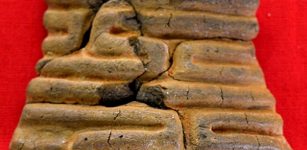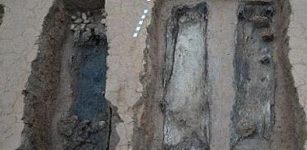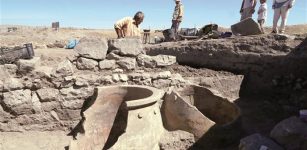Secrets Of Neanderthals’ 130,000-Year-Old Carved Bear Bone Found In The Carpathian Mountains
Jan Bartek - AncientPages.com - A significant archaeological discovery was made during excavations in the 1950s at the Dziadowa Skala Cave in the Czestochowa Upland region of southern Poland. Initially, scientists believed the curious bone found was a bear's rib. The research team unearthed this bone from a layer dating back to the Eemian period, which spanned from 130,000 to 115,000 years ago, a relatively warmer period during the last Ice Age.
This 130,000-year-old carved bear bone was long considered the earliest evidence of Neanderthal cognitive abilities in the region. However, until recently, it had never undergone a comprehensive study.
Tomasz Płonka, Professor of Archaeology at the University of Wrocław, and his team conducted a comprehensive analysis of the bone using advanced techniques. They employed a 3D microscope and computed tomography (CT) scans to create a digital model of the bone. Based on this detailed model, the researchers identified several key characteristics that suggest the marks were intentionally organized.
Firstly, the marks exhibited a repetitive pattern, with incisions repeated in a similar fashion. Secondly, the marks shared a similar basic shape, despite some variations in size. Thirdly, the markings were confined to a specific area, even though space was available for more. Finally, the cut marks were systematically organized, although their spacing varied slightly.
These observations led the researchers to conclude that the marks were intentionally created and organized rather than random or accidental.
This 4-inch-long (10.6 centimeters) bear bone that has Neanderthal-made cut marks. Credit: . Gasior, Plonka et al; CC BY-NC 4.0 DEED
The engravings and incisions found on various artifacts have sparked numerous interpretations among scholars and researchers. Dismissing the notion of mere doodling, the most prevalent theories suggest that these markings served as symbolic representations, numerical notations, or early manifestations of an emerging aesthetic sensibility. These interpretations shed light on our ancestors' cognitive and cultural development, offering insights into their symbolic thinking, numerical comprehension, and artistic expression.
The research team conducted a comprehensive analysis to determine the nature of the incisions found on the bones. They employed an experimental approach, utilizing replica flint blades and Middle Paleolithic knives to create marks on fresh cattle bones.
"The features of the marks found on the Dziadowa Skała bone indicate that they were not left during the process of butchering, cutting materials or trampling. This is evidenced primarily by the morphology of the incisions, which indicates that they were created as a result of repeated movements towards the manufacturer, unusual for the mentioned traces," the research team writes in their study.
According to scientists, the incisions on the bone from the Dziadowa Skała Cave exhibit certain characteristics that align with the principles of perceptual organization, suggesting the advanced cognitive and reflective capabilities of the individual who created them. These markings demonstrate complexity and intentionality that implies a sophisticated understanding of visual perception and the ability to convey meaning through symbolic representation.
Close-ups showing the marks on the 130,000-year-old bear bon. Credit: . Gasior, Plonka et al; CC BY-NC 4.0 DEED
Professor Płonka's observation about the distinctive comma-like shape of the incisions, with their characteristic curve to the right, provides valuable insight. The fact that the incisions curved in that direction when the right-handed experimenter moved the flint instrument towards themselves suggests that the Neanderthal who created these markings was also right-handed. This finding offers a glimpse into the cognitive abilities and potential for symbolic communication among our ancient ancestors. Interestingly, the specific pattern of these incisions raises the possibility that the maker attempted to convey some form of numerical or symbolic message, although the exact meaning remains elusive.
"The bear bone from the Dziadowa Skala Cave is an example of the early symbolic behavior of Neanderthal people. This activity is manifested by findings of simple geometric patterns on different media, patchy evidence for the emergence and occurrence of this behavioral pattern across the world, starting with Homo erectus sensu lato.
See also: More Archaeology News
Current analyses show that the marks were made in a single session by a right-handed individual through repeated incisions, mostly using a technique where the movement was towards themselves. Apparently, the incisions served no practical purpose. Nevertheless, the use of symbolic messages cannot have been regular behavior or involved unstable media as in the Navajo sand art. Only after the coming to Europe of the Homo sapiens would the Neanderthals have started seeking new solutions to ensure more successful competition with the newcomers," the scientists concluded in their study.
This discovery highlights the importance of studying such archaeological evidence to unravel the mysteries of our evolutionary past.
The study was published in the Journal of Archaeological Science.
Written by Jan Bartek - AncientPages.com Staff Writer























